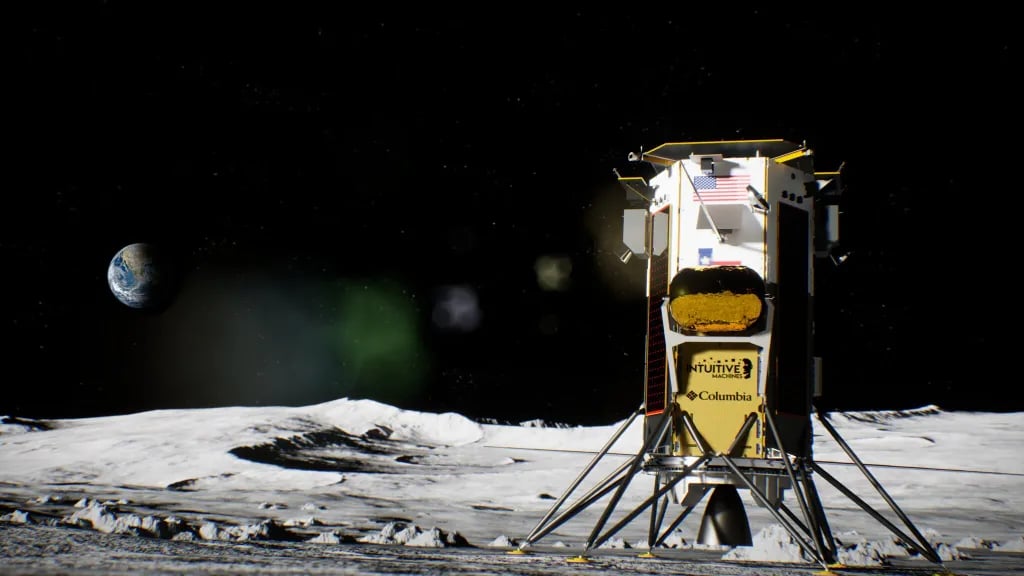Intuitive Machines (LUNR +1.21%) stock is on a roll.
Despite missing earnings in its Q1 earnings report earlier this month, shares of the first American company to land a spacecraft on the moon in more than 50 years remain a fan favorite among space investors and are up 20% since the report.
And why?
Well, let's review.

Image source: Getty Images.
Intuitive Machines' so-so Q1
Intuitive Machines is not yet earning profits. On the contrary, the company lost $0.11 per share in Q1 (although this was down from $2.68 per share lost in Q1 last year). Sales were $62.5 million, down 15% year over year, but are expected to bounce back 10% in Q2.
More encouragingly, the company generated positive free cash flow in Q1 -- $13.3 million -- the first time this had happened in more than two years. Analysts polled by S&P Global Market Intelligence do expect the company to burn cash for the next three quarters ($15 million in total), so Intuitive Machines might still end up FCF-negative for the year. But the difference is basically a rounding error, and it's also possible the company might be able to report positive FCF.
Basically, it's a toss-up, and if Intuitive Machines does manage to report positive full-year free cash flow three years before most analysts were expecting this to happen, it could be a big catalyst to move the stock higher.
Intuitive Machines' big space dreams
So, that's the short-term picture. Now, let's take a look at the long term.
Intuitive Machines is fast becoming NASA's go-to contractor for delivering at least small caches of scientific equipment to the moon. The space agency has awarded Intuitive four separate "IM" missions to the moon, of which two are now complete, and two more are scheduled to take place in 2026 and 2027, respectively.
Unqualified successes so far have been hard to come by, with Intuitive landing its first two IM landers safely, only to see the spacecrafts topple over on their sides when landing. The good news here is that management recognizes the problem and has promised to "incorporate IM-2 lessons learned" in building its IM-3 lander for next year's mission so that it can, with any luck, land upright next time around. The other good news is that NASA seems sufficiently satisfied with the landings -- despite their shortcomings -- and that it has promised to pay Intuitive "success payments" for the IM-2 mission this coming quarter.
The other, other good news is that landing payloads on the moon is only one of the projects NASA has hired Intuitive Machines to perform. The other project, dubbed the Near Space Network, is a $4.8 billion contract to build a satellite communications relay to send messages back and forth to the moon. The company is receiving milestone payments for this work already (which may have helped it to turn FCF-positive last quarter). The contract is currently scheduled to run for 10 years, which should secure a strong revenue stream for Intuitive Machines stretching out over a decade of work -- roughly $480 million in revenue per year.
Valuing Intuitive Machines stock
Now, here's some less-good news: Investors bid up Intuitive Machines stock sharply after earnings this month. At $11 and change, the stock currently costs nearly twice what I paid for it (after the second not-quite-100%-successful landing). Probably, a lot of the easy money on this stock has already been made, and further gains will be harder to come by.
That's not to say "impossible," however. At $11 and change, Intuitive Machines' stock is still down roughly 50% from its all-time high set in January. There's no guarantee the stock will sell that high again, but it might, especially if Intuitive succeeds in modifying its landers so that the "Weebles wobble, but don't fall down" on the next landing. And farther out, the vast majority of the funds covered by the NSN contract remain to be earned. The more progress Intuitive makes in building its communications network, the more likely the stock is to rise even higher.

NASDAQ: LUNR
Key Data Points
For now, with shares priced at 4.1 times trailing sales, Intuitive Machines stock sits at the high end of what I've determined to be "fair value for an unprofitable space stock" -- anywhere from a price-to-sales ratio of 2 to 4 times. It's not an obvious bargain, but yes, I think even at these levels, it's still cheap enough to be worth a buy, so long as you buy small and limit your risk.





